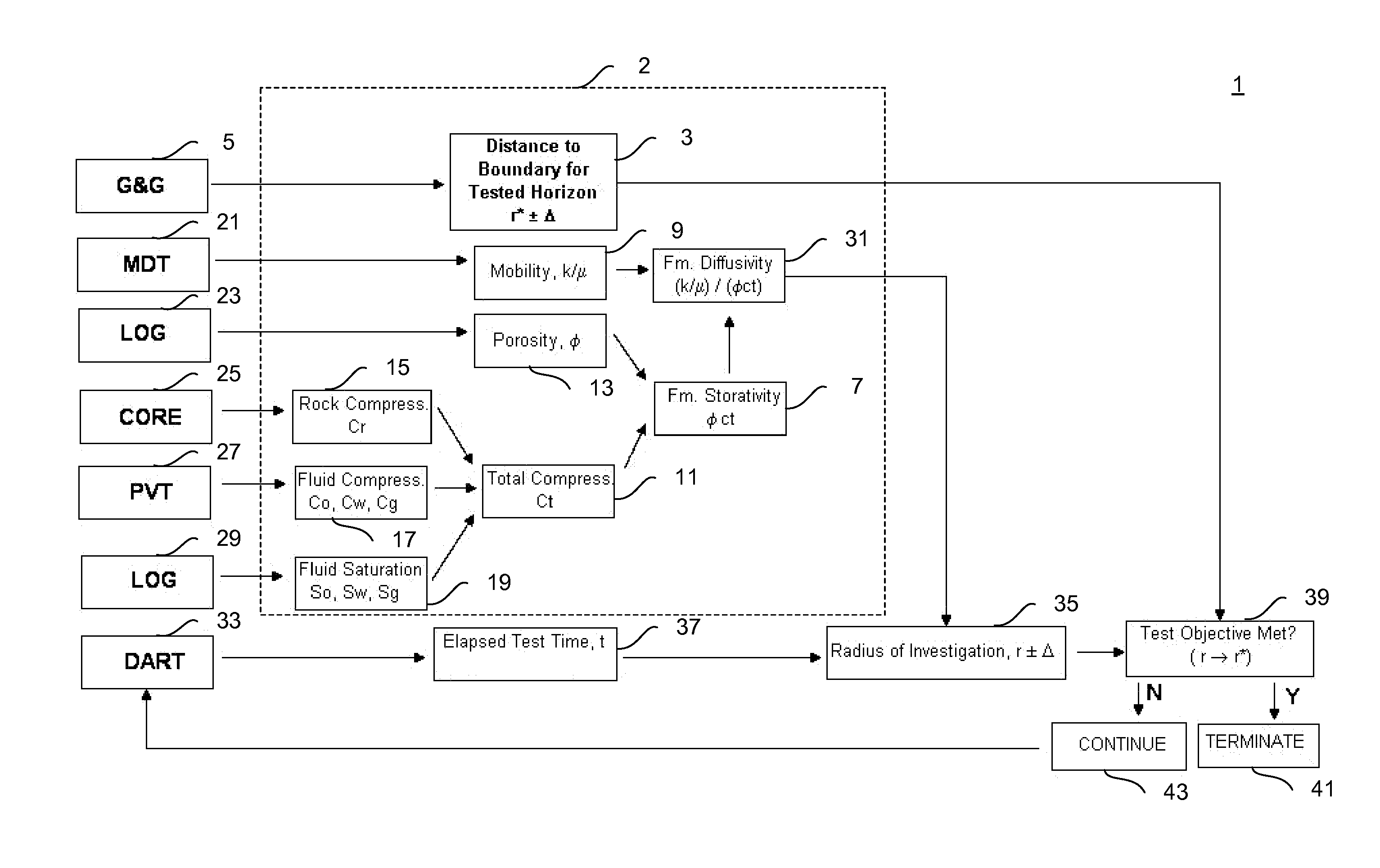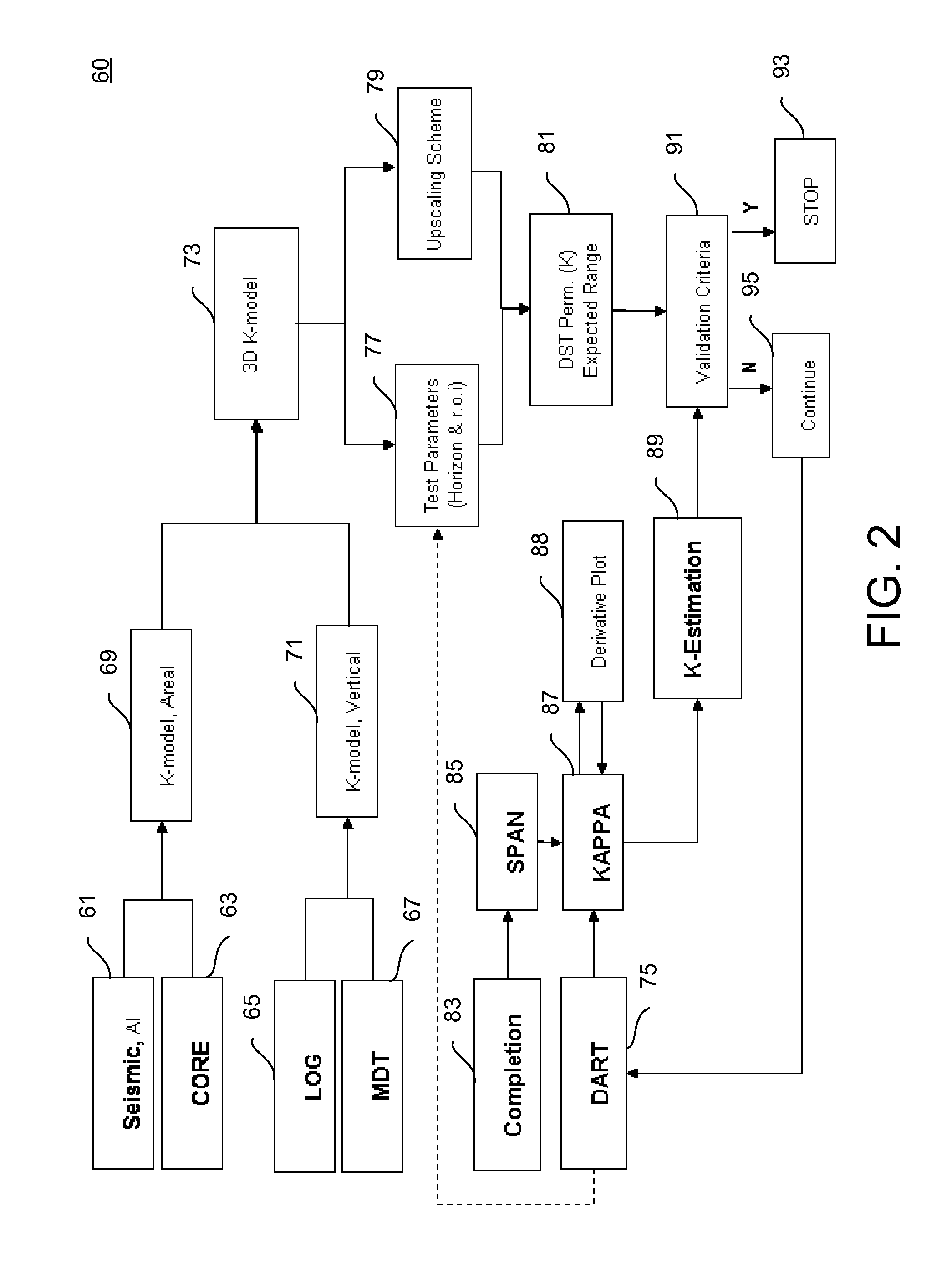System and method for well test design, interpretation and test objectives verification
a well and test design technology, applied in the field of well test design, interpretation and test objective verification, can solve the problems of not being able to properly decide about the test sequence in advance, the test may not be properly designed by the test designer, waste of rig and testing equipment time, etc., to achieve the effect of enhancing and adding value to well testing operations, reducing the number of development wells employed, and improving field performan
- Summary
- Abstract
- Description
- Claims
- Application Information
AI Technical Summary
Benefits of technology
Problems solved by technology
Method used
Image
Examples
Embodiment Construction
[0035]Referring now to the drawings, wherein like reference numerals may designate identical or corresponding parts throughout the several views, and more particularly to FIGS. 1-17 thereof, there are illustrated exemplary systems and methods for well test design, interpretation and test objectives verification.
[0036]The present disclosure includes recognition that in order to avoid loss of measurement data or waste of resources it has been proposed to assign the test engineer as the only responsible person for supervision of the well test procedure over the whole periods of test design, implementation, data acquisition and their quality control, and interpretation (see, e.g., Barnum and Vela “Testing Exploration Wells by Objectives,” paper SPE 13184 presented at the SPE Annual Technical Conference and Exhibition, Houston, Tex., USA, 16-19 Sep. 1984). Emphasis is placed on the importance of design execution of the test based on a detailed list of test objectives, wherein important t...
PUM
 Login to View More
Login to View More Abstract
Description
Claims
Application Information
 Login to View More
Login to View More - R&D
- Intellectual Property
- Life Sciences
- Materials
- Tech Scout
- Unparalleled Data Quality
- Higher Quality Content
- 60% Fewer Hallucinations
Browse by: Latest US Patents, China's latest patents, Technical Efficacy Thesaurus, Application Domain, Technology Topic, Popular Technical Reports.
© 2025 PatSnap. All rights reserved.Legal|Privacy policy|Modern Slavery Act Transparency Statement|Sitemap|About US| Contact US: help@patsnap.com



